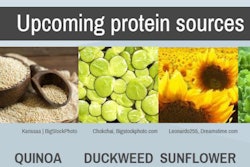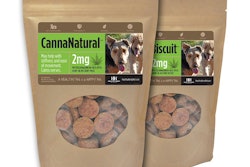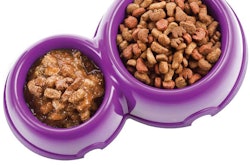
We probably didn’t need surveys to know that consumers want to see clean labels on the pet food – not to mention human food – they consider purchasing. Nonetheless, two recent reports show just that: 75 percent of dog owners in a survey conducted by Nutro pet food said their own efforts toward “clean eating” influence what they feed their dogs, and 92 percent said it’s important that their family’s food has ingredients that are whole, simple and not artificial.
In a separate survey, Open Farm pet food found that 90 percent of US pet owners said it’s important that the pet food they purchase provide transparency on ingredients, and 84 percent said they pay as much attention to the ingredients in their pets’ food as in their own food.
It should be noted that both surveys were conducted and released to promote the respective pet food company’s brand and products (a complete product relaunch in the case of Nutro). But at least the companies didn’t try to hide that intention or purpose.
Unfortunately, I don’t think the same thing can be said about the recent Clean Label Project’s release of ratings of pet foods on the US market. Starting with the very name, this project seems designed to mislead consumers interested in clean labels on products.
Clean Label Project not what its name implies
The term “clean label” does not have a standard definition. A pet treat company, Clear Conscience Pet, trademarked a CleanLabel claim several years ago and describes it on its website as:
“Pure: Simple limited ingredient recipes, artisan crafted with nothing artificial or synthetic.
Pronounceable: Ingredients you recognize and trust, derived from whole food sources.
Purposeful: Every ingredient is chosen to make your pet healthy and happy; no fillers.”
That aligns with other, more general definitions I’ve seen for clean label, including one given by David A. Dzanis, DVM, PhD, DACVN, in his recent Petfood Insights column about the Clean Label Project: “The primary attribute of a clean label is that the ingredients are declared in simple, recognizable terms, without any chemical-sounding names or other implications that the ingredients are less than wholesome, pure foodstuffs.”
Leading up to Global Pet Expo 2017, when I first heard about a new organization called the Clean Label Project, I thought that perhaps the organization had developed a set of criteria to somehow judge or rate whether product labels – in this case, for pet food – were indeed “clean,” maybe based on the number of ingredients listed, the types of ingredient names, the number and type of “free from” claims. While such criteria would likely be rather subjective and arbitrary, at least they might offer consumers a basic reference for comparing pet foods, I figured.
But that’s not what the Clean Label Project is about at all.
A friend happened to visit us shortly after that, and somehow this new project came up in conversation. Upon hearing its name, our friend, who has no connection to the pet food industry, immediately speculated that a lab was testing pet foods to ensure that the ingredients claimed on the labels were actually in the products.
But that’s not remotely close to what the Clean Label Project is about, either. What the organization actually did, or claimed to do, was to test more than 900 cat and dog food products for 130 potentially toxic chemicals, including the heavy metals arsenic, cadmium, lead and mercury, and adulterants such as melamine, and rank the products, apparently based on the levels of those substances. What does that have to do with the products’ labels? Absolutely nothing.
No data, no to slow responses
So, just in its choice of name, this organization set out to, at the very least, bait consumers. But, one might argue, isn’t it a laudable goal, trying to warn consumers about potentially dangerous substances in the foods they might be considering or feeding their pets?
Yes, unless you consider the fact that many of the substances they supposedly tested for naturally occur in soil and may show up in minute amounts in anything grown in soil. “I bet if you tested most human food products and ingredients for the same things, they’d show trace amounts, too,” said our friend, who happens to be a personal chef.
What’s really key is that we have no idea how much of these substances may actually be in the pet food products tested, because the Clean Label Project did not release any data at all with its report. Dzanis explained the situation well: “There are no actual analytical data provided on the site. Rather, everything is reported in relative terms; i.e., how a pet food compares to others overall. One cannot discern on what basis a particular item was ranked; e.g., whether it was the pesticide residues or heavy metal content that caused it to be low on the list, or something else entirely. Further, notwithstanding a few tidbits of information; e.g., that chromium can cause cancer and kidney damage, it is extremely difficult to put these facts into perspective. In other words, without numbers it’s impossible to tell whether the chromium concentrations among pet foods are materially different from each other, or if in fact any of those tested are anywhere close to what could potentially cause adverse effects.”
In addition, I have talked to representatives of pet food companies whose products were ranked and who tried contacting the organization to obtain the data on their products. The Clean Label Project has never responded to such requests – nor did they respond to initial attempts to reach them by our staff reporter, Tim Wall. (Just before this post was published, they finally replied to him, saying they would send responses to his questions in a week.)
Consumers are figuring it out
That’s just the beginning of concerns about this project. Other questions include that it may be owned by the same entity that owns Ellipse Analytics, the so-called independent lab that tested the pet foods. Wall is still investigating this and other matters, and we hope to report more information if and as he is able to substantiate it, and after the Clean Label Project sends him its responses. We do know that, while the Clean Label Project is registered as a nonprofit, it has not filed the all proper legal documentation for that status.
That could be because this project and website seem designed to ultimately make money for their owners. For example, for even the pet food products rated with only one star on the site, there’s a button to buy the products on Amazon.com – perhaps with the Clean Label Project receiving a referral fee? Aside from any financial opportunities, as one person pointed out to me, if this organization were truly trying to warn consumers about products its testing supposedly showed have dangerous substances, why would it enable the purchase of those products?
The silver lining in all of this is that, based on comments on our website as well as social media, some consumers also seem pretty skeptical of the Clean Label Project’s ratings and intentions. It’s a shame this didn’t turn out to be a helpful tool for consumers interested in clean labels, but at least they seem to have figured that out.


















